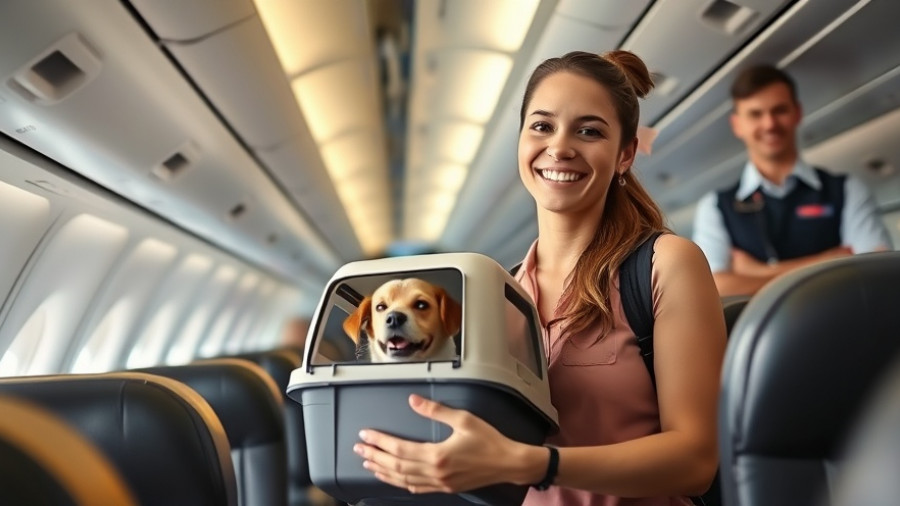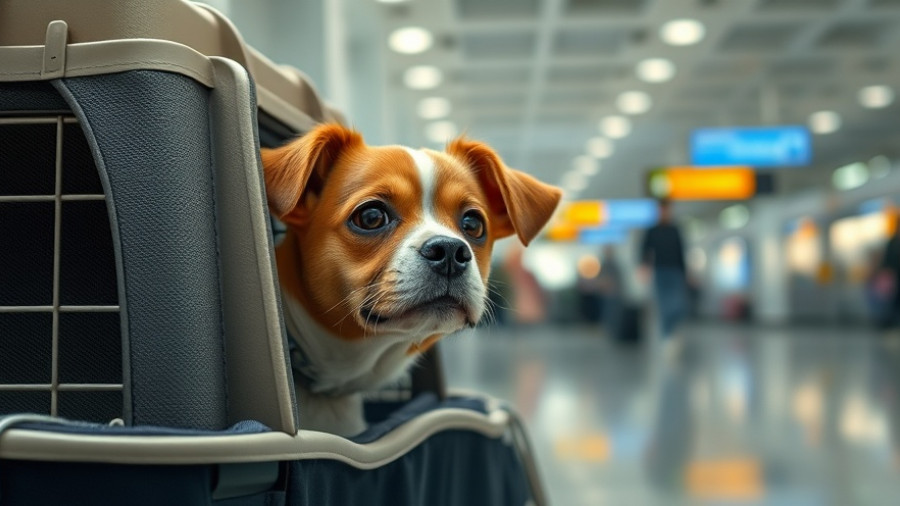
Understanding the Risks of Flying with Pets
Millions of pet owners are eager to include their furry companions in their travel adventures. A report from the American Pet Products Association highlights a growing trend: two-thirds of dog owners and 80% of cat owners have flown with their pets at least once in the past year alone. But with that trend comes responsibility; ensuring the safety of our beloved animals amidst the bustling airline environment is paramount. The recent data from the Department of Transportation indicates that despite the overwhelming number of pets flown (over 161,000), there were only 13 reported incidents related to pet welfare. However, the potential severity of these incidents, including the tragic deaths of 10 animals in 2024, emphasizes the need for thorough pre-flight preparations.
Preparation is Key
One of the most crucial steps before embarking on any journey with your pet is to assess their health. Pets that are young, elderly, or have existing health conditions can face additional stress and danger during flights. A pre-travel consultation with your veterinarian is essential to ascertain whether your pet is fit for air travel. If you find that flying may not be in your pet’s best interest, an alternative road trip might provide a more manageable environment.
Know the Specifics of Your Destination
Before you take off, researching your destination’s regulations concerning imported pets is vital. Local laws may mandate specific vaccinations or health certificates. Preparation is crucial, as any unexpected requirement can disrupt your plans significantly.
Communicate with Airlines Early
Each airline's pet travel policy can vary significantly, making it important to reach out and obtain vital operational details about traveling with your pet well before booking. Inquire about cabin space limits, size restrictions, and necessary documentation like health certificates. Most importantly, confirm pet arrangements again 48 hours before your flight to avoid surprises.
Flying Options: Cabin vs. Cargo
If possible, always opt for cabin travel over cargo. History shows that no reported incidents occurred involving pets in the cabin, while all recorded fatalities involved animals in cargo holds. Keeping your furry friend close during the flight can significantly reduce stress and anxiety for both pet and owner.
Crate Considerations and Comfort
Properly preparing your pet’s crate is essential. Make sure you select a USDA-approved shipping crate big enough for your pet to stand, turn around, and lie down comfortably. Line the crate with absorbent bedding and attach a pouch of food on the outside to ensure your pet is fed during layovers. Also, labeling your pet’s crate with identification tags can aid significantly in case of an emergency.
Preventative Health Measures
In preparation for any journey, ensuring your pet is microchipped and has a collar with your contact details is essential. This simple step can make a world of difference if your pet gets lost. Carry a recent photograph of your pet for identification purposes should the need arise.
Day of Travel: What to Do
On travel day, aim to feed your pet a light meal several hours before your flight to minimize discomfort during takeoff. Drinking water is crucial, but findings from various studies suggest avoiding a full bowl before takeoff to prevent spills and accidents. Finally, ensure you arrive at the airport early to allow time for check-in, security, and some last-minute bathroom breaks.
Conclusion: Stay Educated and Prepared
While the prospect of flying with your pet might cause some anxiety, it can be a pleasant experience with adequate preparation and understanding. Knowing your airline's policies, getting your pet properly trained and accustomed to their carrier, and being cautious about their health can considerably reduce the likelihood of any problems and help create a smooth journey. Whether traveling globally or locally, keeping these tips in mind ensures that your nearest companion has a safe and enjoyable experience.
As you prepare for your next adventure, remember that responsible pet ownership extends beyond everyday life—it’s about loving and protecting your pet in every situation. Take these steps seriously when it comes to flying with your pet to make every trip an enjoyable journey rather than a stressful event.
 Add Row
Add Row  Add
Add 




Write A Comment